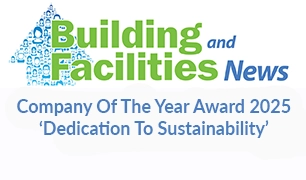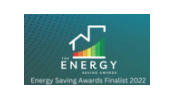The UK commercial sector is still very much in the early process of adapting to more sustainable working, with many still reliant on fossil fuels. Despite the calls to change to more renewable forms of energy many are continuing to refit with familiar gas technology, so what is the current state of play between gas and sustainable buildings?
Decarbonising UK commercial properties is an immense challenge. They are directly responsible for nearly one-fifth of the UK’s carbon emissions and, since domestic hot water (DHW) can account for as much as a third of a business’s routine energy demands, addressing emissions from hot water generation should be on an organisation sustainability agenda.
In response there are two broad UK-wide strategies: either installation of heat pumps to drive electrification, or, for properties on the existing gas network, switch over to hydrogen as a low-carbon alternative to natural gas.
In 2020 according to the Department for Business, Energy, & Industry Strategy (BEIS) more than 1,656,000 non-domestic buildings in England and Wales, the large majority of which were connected to the gas grid, were consuming more than 172 TWh of gas. The number of commercial properties is set to continue to grow, and though these new builds are opting for electric-only applications, existing buildings face a number of issues, not least the capital expenditure required to modernise services and the increased operational costs from implementation.
For this reason, unlocking the potential of hydrogen represents a familiar, easier and more cost-effective way to transition to more sustainable heating practices in buildings. The International Renewable Energy Agency (IRENA), recently estimated Hydrogen will cover up to 12% of global energy demand by 2050 from virtually nothing today. At least two-thirds of total production will be green hydrogen (produced with renewable electricity) with the remainder covered by blue hydrogen production (derived from natural gas) so long as the carbon capture and storage (CCS) is proved viable.
In the UK, the status of hydrogen remains to be confirmed as part of the government’s push towards attaining net zero by 2050. The Heating and Buildings Strategy published in late 2021 does, however, give an indication of the growing support for hydrogen-based technologies, as does continued government investment in its feasibility. Hydrogen, as a result, is increasingly seen as a core shift in the energy trade and critically, in the wake of demands to reduce dependency on Russian oil and gas, the future for regionalisation of energy supply.
Currently, when comparing average non-domestic gas to electricity tariffs, electricity will cost as much as four and a half times that of gas, making gas the more cost-effective option. Yet it fails to deliver a clear investment in sustainability unless hydrogen is used to decarbonise. That also comes with a number of advantages given the equipment remains familiar to operate and manage. It should ensure capital costs remain lower, while decarbonisation can be accelerated within a property.
For those wishing to adopt the hydrogen approach, there remains a question mark over how quickly, where and in what proportion hydrogen will be introduced into the gas grid. With the ultimate aim of introducing 100% green hydrogen via the existing gas network, gas water heaters and boilers will need to be factory configured to burn hydrogen only. Or be hydrogen-ready, whereby natural gas-compliant appliances can be converted to operate on hydrogen only in the future. These appliances, with the exception of some regional test deployments of hydrogen, are not expected to be actively used with 100% hydrogen until well into the 2030s at the earliest, with a potential national roll-out predicted for the 2040s.
As an interim, the UK is assessing the potential for introducing hydrogen into the existing gas network as a blend at 20% volume to deliver a safer, greener gas alternative that reduces carbon emissions. A blended gas grid has the potential to become a reality by the late 2020s, enabling organisations to become used to working with hydrogen as an energy source with less disruption and no noticeable change in how gas is used within the property.
Can gas & sustainable buildings still co-exist?
For commercial organisations which have recently invested in, or plan to refurbish, existing non-hydrogen-ready gas appliances, the most recent condensing gas-fired models currently on the market should already be able to burn natural gas with a blend of up to 20% hydrogen without requiring any modification.
For example, Adveco’s current ranges of high efficiency, ultra-low emission gas-fired condensing water heater, the instantaneous ADplus and semi-instantaneous AD, as well as the MD boiler range, are all hydrogen 20% blend ready. Such appliances give customers peace of mind when investing in gas-fired water heating applications. With the latest generation of gas water heaters and boilers offering more rugged construction and technology that better manages operation the working life of the appliance is further extended, meaning if purchased today they should continue to operate well into the 2030s. As hydrogen blending becomes commonplace, this then delivers on the desire to decarbonise operations in the easiest and most cost-effective manner as a business user. When these require replacement a wider choice of more advanced, proven and lower-cost hydrogen-ready and 100% hydrogen appliances for commercial applications will be available on the market as the gas network matures and greens.
Gas-fired commercial water heating, therefore, remains a proven and future-proof choice for the working lifespan of current-generation appliances. Not only practical and lower cost to operate, these also deliver a way to introduce a degree of sustainability in the interim before hydrogen can make a real impact so gas and sustainable buildings will develop hand in hand.
With modern building regulations, it is likely that a commercial hot water system, whether it uses gas or electricity, will still also require a low-carbon preheat source to reduce carbon emissions. For properties with an existing gas connection employing solar thermal can be extremely effective in reducing reliance on the existing gas boiler, cutting as much as 30% of the annual energy demands for water heating.
Fortunately, solar thermal also lends itself to working in conjunction with not only conventional or blended gas heating but also other renewable technologies including air source heat pumps. This enables a variety of bespoke, hybrid applications to be considered to meet the varied demands of existing commercial buildings.
Despite the reliance on fossil fuel, the latest generation of gas water heaters and boilers provide a realistic and lower cost option for organisations already connected to the gas grid to leverage technology that offers higher efficiency operation for lower energy consumption and critically ultra-low carbon and NOₓ emissions. Through integration with renewables, they offer a way to further reduce a building’s energy demands and emissions today, as well as the potential to act as a gateway technology to future greener hydrogen blend energy sources at no further cost. For the next decade or so, they still have an important role to play meaning gas & sustainable buildings will remain a reality, especially if gas supplies can successfully transform from its fossil fuel origins to green hydrogen.
















